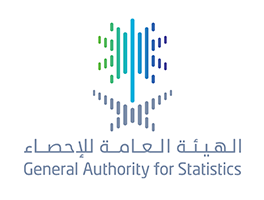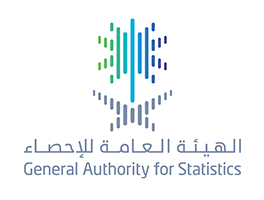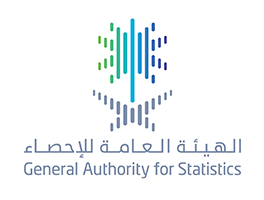
GASTAT concludes its awareness week in Aseer region
03-12-2018
Within GASTAT efforts to raise statistical awareness among all society classes.
GASTAT concludes its awareness week in Aseer region
As part of its plan to raise statistical awareness among all society classes, the General Authority for Statistics (GASTAT) concluded the statistical week in Aseer region. The statistical week included the meeting of His Excellency the president of GASTAT, Dr. Fahad bin Sulaiman Altekhaifi with businessmen and the board members of Abha Chamber. During the meeting, they discussed the role of the private sector in the statistical process, in addition to the statistical products that are related to Aseer region.
“The Smart Statistician” exhibition has been also held during the statistical week in cooperation with the General Administration of Education in Aseer region. The exhibition events took place in “ Aseer’s Educational Center” during the period 17-21 Rabi Al Awal 1440H, with the participation of more than 35 schools.
The exhibition aims to clarify the role of statistics in the student life. In addition, it aims to explain the statistical concepts and raising the level of students’ awareness. Moreover, it presents the statistical process steps and stages in a simple and scientific way, and enhances the student’s realization of the statistician role. However, the exhibition demonstrates the impact of data accuracy (data provided by the household head) on development, as the student is considered an effective method in raising households’ awareness.
It is worth mentioning that the student journey inside the exhibition starts by moving between the different sections that provide students with scientific information in an entertainment and attractive way. The sections include an identification of statistics, the difference between statistics and mathematics, the role of the General Authority for Statistics, how students and households are relating to the authority work, and how statistical researches are implemented on the field through simulating the process by students, where a student takes the role of the “statistician” when he visits a household to fill an electronic form designed especially for the research. However, many awareness lectures were held in Khamis Mushait governorate during this week an attended by a number of the governorate schools’ students.
On the other hand, King Khalid University hosted the event of (We share you your academic journey) during the same period. This event targets university students, faculty members, and all university staff. It presents GASTAT statistical products and services, and explains how to use them for the purpose of conducting academic studies and research.

GASTAT: Consumer Price Index (CPI) Decreases and Annual Index Rises in October,2018
28-11-2018
GASTAT: Consumer Price Index (CPI) Decreases and Annual Index Rises in October,2018
General Authority for Statistics GASTAT released its monthly report of CPI in Saudi Arabia for October. The report was published on its official website www.stats.gov.sa . The Consumer Price Index CPI decreased 0.3% in October compared to the previous month (September 2018).
GASTAT report showed that the Consumer Price Index CPI in Saudi Arabia decreased to (106.8) Index Points in October from (107.1) in September of 2018 with 0.3% change.
On the other hand, the report attributed the monthly decline of the index to the declines of the eight sections composing it, which are: housing, water, electricity and gas section with 0.8% , home furnishing and equipment section with 0.4%, clothing and shoes section with 0.3%, transportation section with 0.3%, personal goods and services section with 0.2%, health section with 0.1%, culture and entertainment section with 0.1%, and finally restaurants and hotels sections with 0.1%.
In contrast, two of the main sections witnessed an increase, which are: food and beverages section with 0.2% and tobacco section with 0.1%. Telecommunication and education sections remained stable with no change.
The year-over-year (YOY) of CPI registered an increase of 2.4% in October 2018 compared to the same month last year reaching (106.8) in October 2018 compared to (104.3) in October 2017.
The ten sections composing the CPI contributed to year-over-year increase, which are: transportation section 11.5%, tobacco 10.2%, restaurants and hotels 8.7%, food and beverages 7.3%, health 4.0%, culture and entertainment 3.2%, home furnishing and equipment 2.8%, telecommunication 1.4%, education 0.2%, personal goods and services 0.1%.
On the other hand, two of the main sections witnessed a decline, which are: clothing and shoes section with 5.0% as well as housing, water, electricity and gas section with 3.6%.

GASTAT Releases Internal Trade Survey Results Q2- 2018
25-11-2018
Number of Saudi Females Workers Increased in Internal Trade Activity
GASTAT Releases Internal Trade Survey Results Q2- 2018
The General Authority for Statistics (GASTAT) released on its official website www.stats.gov.sa the results of the "Internal Trade Survey for the Second Quarter of 2018". The survey is defined as a set of economic statistics and data that can be used for short-term to measure the performance of the trade sector in order to assess its growth, and identify its strengths or weaknesses.
Moreover, it is an important economic activity that contributes to expand employment and raise GDP, exactly like the retail activity. This activity connects producers with consumers, and focusses on the features and components of establishments engaged in the activities of vehicles sale and repair as well as wholesale and retail sale trade.
The survey showed that the number of Saudi females workers of the internal trade activity establishments increased by 2%, compared to the previous quarter. The workers’ number of internal trade sector in Saudi Arabia reached about one million six hundred eighty-five thousand workers by the end of the second quarter of 2018, including almost one million two hundred fifty thousand non-Saudi workers. However, the number of Saudi workers of the same sector was approximately four hundred thirty-four thousand workers.
The employees of the retail trade made up (1,054,460) one million, fifty-four thousand, four hundred sixty workers, including (771,650) seven hundred seventy-one thousand, six hundred fifty non-Saudi workers. However, the number of Saudi employees in this activity was (282,810) two hundred eighty-two thousand, eight hundred ten workers, the survey showed.
The results of the survey also indicated that the total operating revenues(sales) of the internal trade sector during the second quarter of the current year 2018 amounted to around (148,987 million) one hundred forty-eight thousand, nine hundred eighty-seven million riyals. Nonetheless, the total operating expenses of the sector during the same period recorded about (89,312 million) eighty-nine thousand, three hundred twelve million riyals. Therefore, the operating surplus of the three sector activities during the first quarter of 2018 was about (48,052 million) forty-eight thousand, fifty-two million riyals.
Based on the data of the survey, the operating surplus of the wholesale trade was the highest among all the activities of the internal trade, where its number was about (18,928 million) eighteen thousand, nine hundred twenty-eight million riyals during the second quarter of the current year 2018. On the other hand, the operating surplus of the retail trade activity reached around (15,72million) one thousand, five hundred seventy-two million riyals. Finally, the operating surplus of the sale and repair of motor vehicles and motorcycles activity accounted to almost (13,401 million) thirteen thousand, four hundred one million riyals.

GASTAT: Saudi Workers Monthly Average Wage in Four Sectors: 10.238 SAR
21-11-2018
Included the whole salary “basic, allowances, bonuses, overtimes, and other compensations”
GASTAT: Saudi Workers Monthly Average Wage in Four Sectors: 10.238 SAR
The General Authority for Statistics (GASTAT) spokesman, Taiseer Almofarrej said that according to the labor market bulletin of the second quarter, 2018, the average monthly wage of Saudi workers who get paid for their work in four sectors; public sector, private sector, non-profit organizations, international and regional agencies, and other sectors reached (10.238) SAR. Regarding the calculation method of this average, Almofarrej stated that it was measured based on estimating the average wages of all Saudis (males and females) in the above mentioned four sectors either inside Saudi Arabia or outside it, in addition to the wages of workers in other sectors which were taken from the field survey that GASTAT conducts quarterly by asking households about their monthly wages.
Almofarrej indicated that the wages about which households are asked differ from the wages registered in the administrative records of the different sectors, where the head of the household disclose the monthly wage for any work which may not include a job salary or any related allowances or bonuses. However, Almofarrej said that the average wages of Saudis (males and females) who work in these sectors registered (11.198 SAR) in the public sector, (7.339 SAR) in the private sector, (4.750 SAR) at non- profit organizations, and (16.257 SAR) in the other international and regional agencies and sectors.
As for the difference between the statistics issued by GASTAT and the ones issued by other entities such as GOSI, Almofarrej illustrated that the statistics issued by GOSI represent the basic salary average registered by the employer. They do not include any additions such as allowances, compensations, or bonuses. Therefore, it is normal to have an average that is less than the average derived from the answers of households’ heads in the field survey based on which GASTAT issue its statistics.
Regarding the reasons why the Bulletin of the labor market revealed statistics that were not shown in previous years, Taiseer Almofarrej confirmed that what was issued earlier is the results of the Labor Force Survey, this is the results of the fieldwork that GASTAT conducts every quarter. Since the results of the fourth quarter of 2016, GASTAT has begun to issue a more comprehensive release under the name "Bulletin of the labor market." What distinguishes the bulletin is that it is an integrated work between government institutions (the General Authority for Statistics, the Ministry of Labor and Social Development, the Ministry of Civil Service, in addition to the National Information Center (NIC), the results of the field survey and the registered data provide a panoramic and comprehensive picture of the labor market. As a result of this statistical integration, the Bulletin contains a large number of detailed data on employees according to the rules and regulations to which they are subject, Gender, age, administrative region, and educational level. It also includes data of jobseekers, average monthly wages, working hours, and domestic workers. The aim is to support policy and decision makers.
